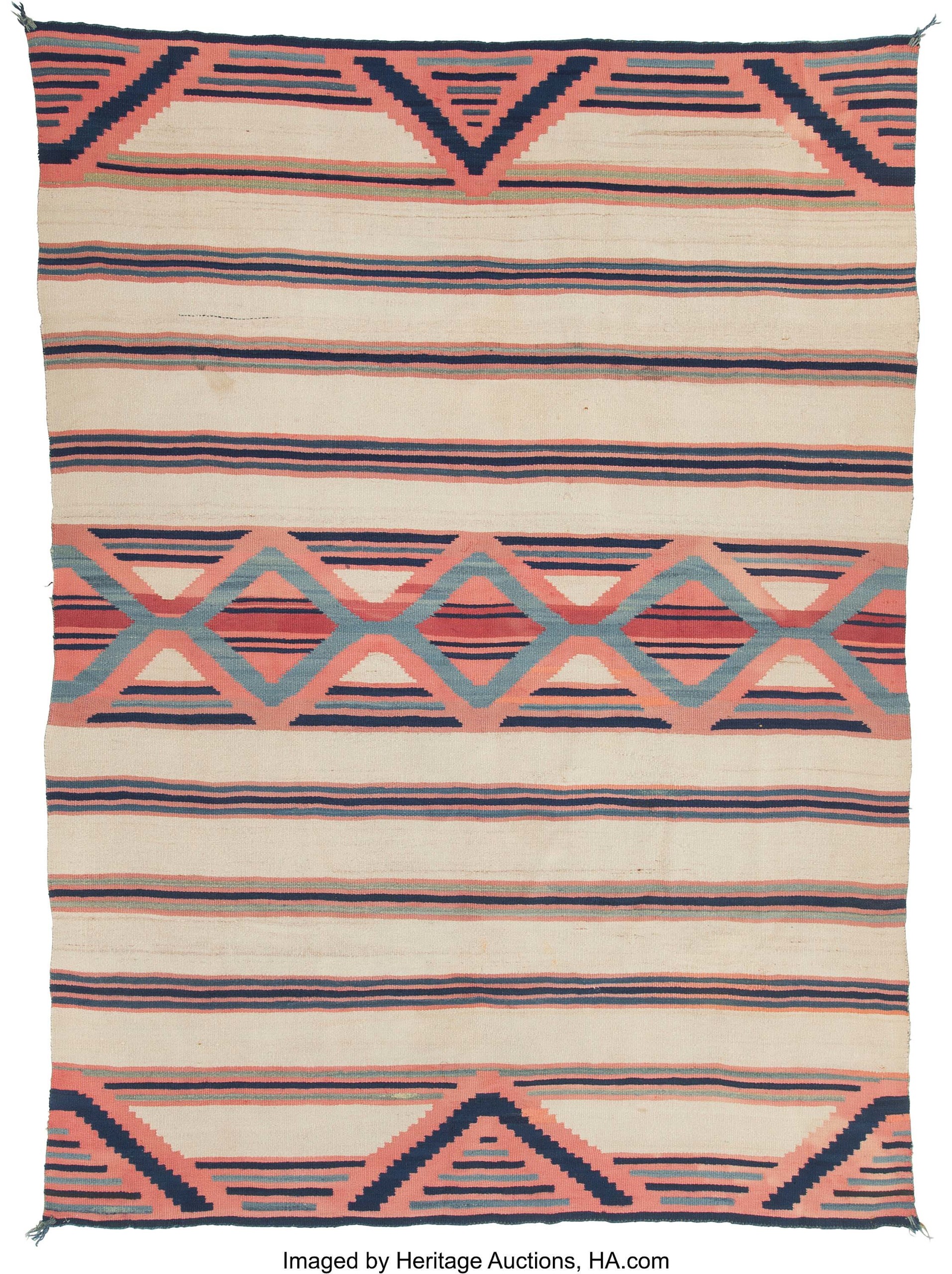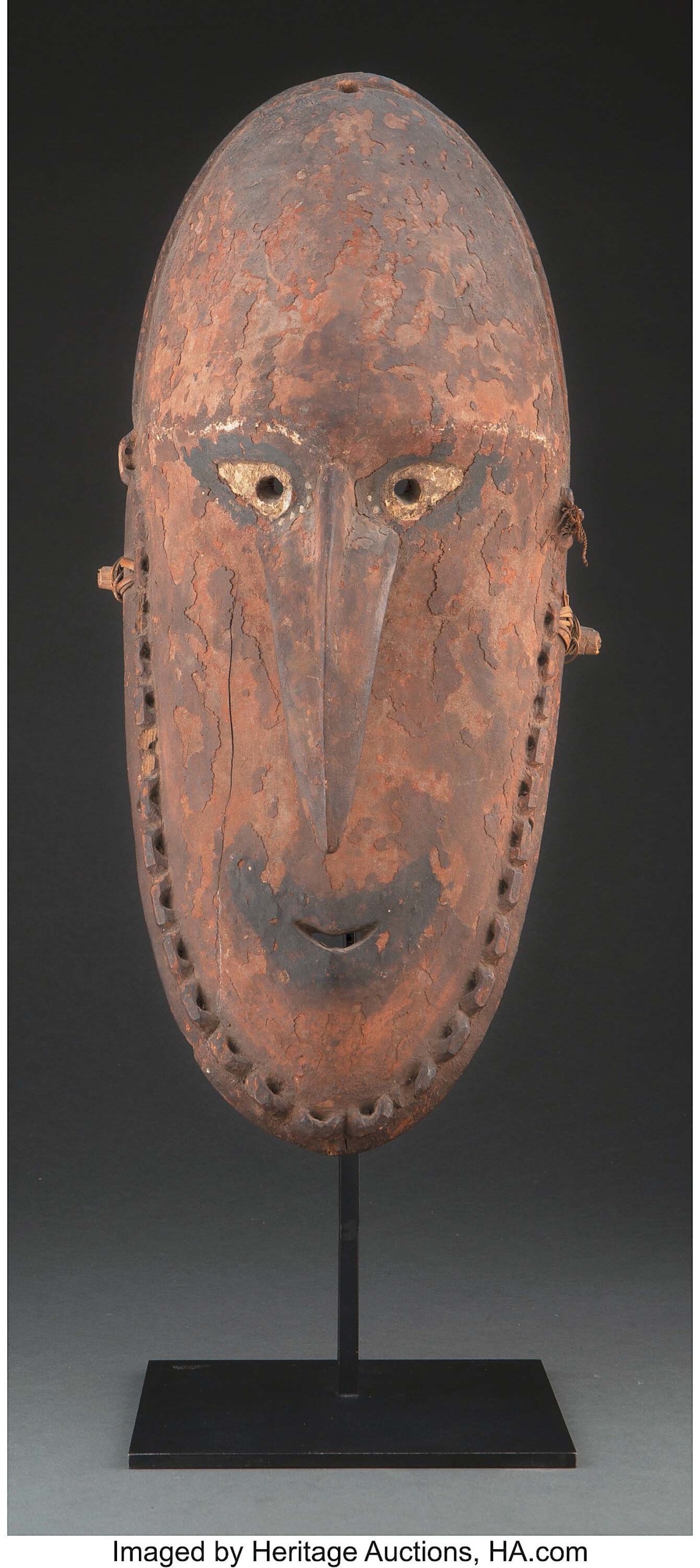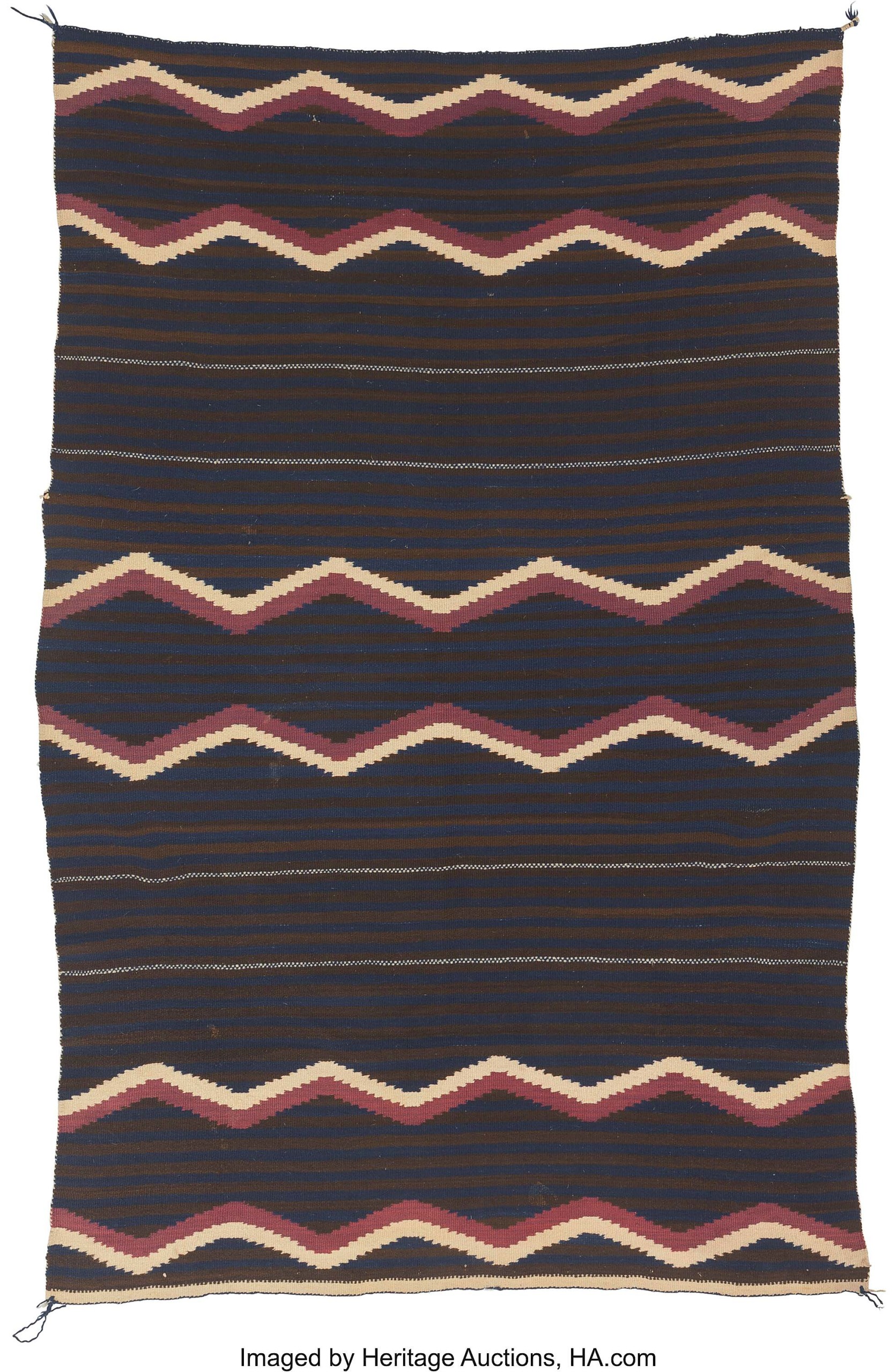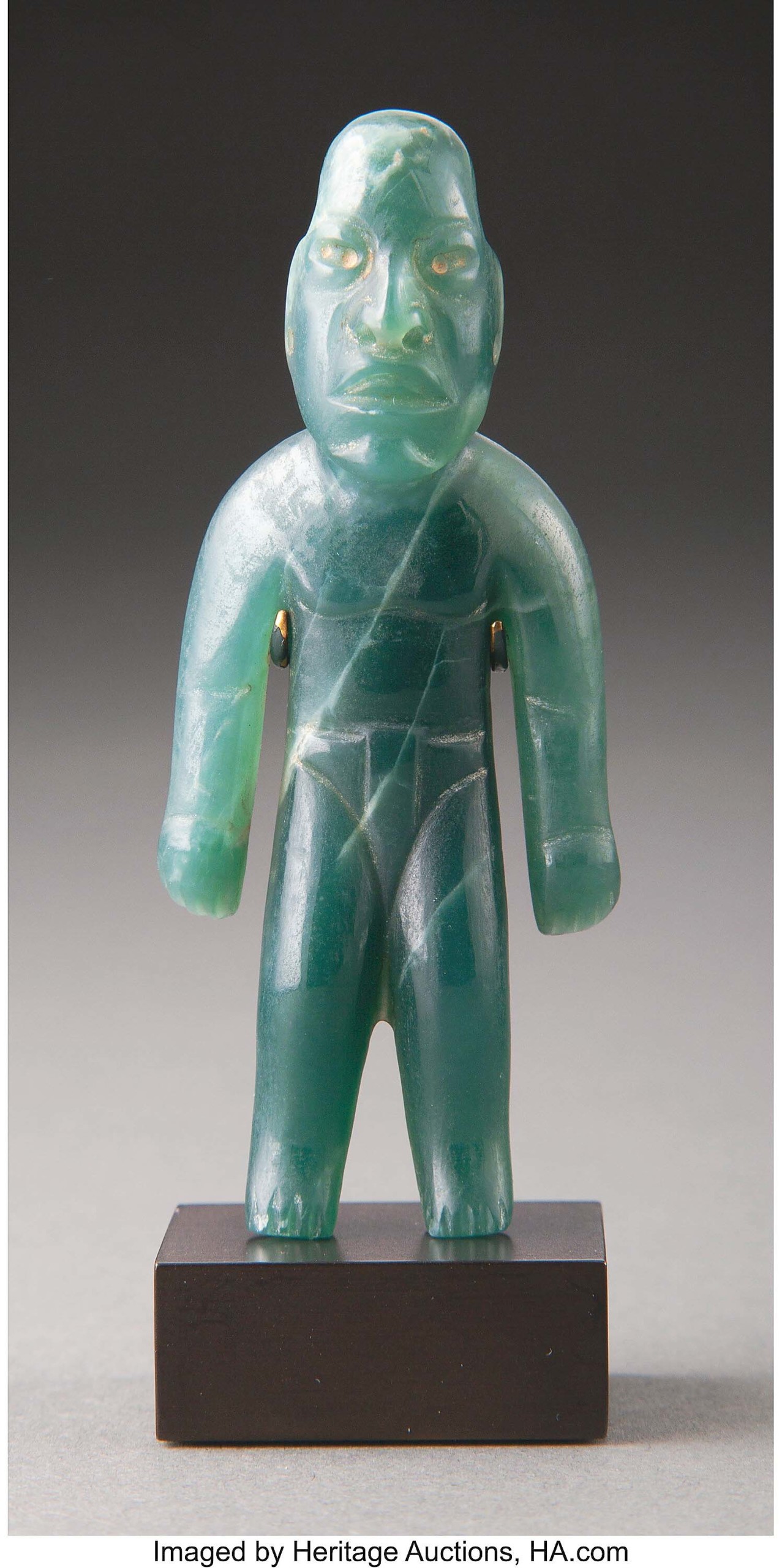
The top lot of the day was this circa 1865 Navajo serape with results indicating genuine cochineal dye. It measured 64 by 49 inches and was sold to a private collector for $35,000.
Review by Carly Timpson; Photos Courtesy Heritage Auctions
DALLAS — The works offered in Heritage Auction’s sale of Ethnographic Art highlight a visual history of Indigenous communities spanning eras as early as 900 BCE to the late Twentieth Century and regions from North America to Indonesia. At its close, the auction realized $1,282,828 and around 80 percent of the 374 offered lots were sold.
Leading the sale was a Classic period Navajo serape, circa 1865. Christina Rees, Heritage’s public relations specialist shared that the serape was accompanied by a dye test which authenticates the use of cochineal dye and validates the origin date. The results of this dye test greatly contributed to its value and helped drive the bids up to $35,000.

This Murik warrior spirit, “brag sebug,” mask from Murik Lagoon, Coastal Sepik River, East Sepik Province, Papua New Guinea, circa mid-Nineteenth Century, measured 22¾ inches tall and achieved $27,500.
The second-highest sale of the day was a circa mid-Nineteenth Century Murik mask which achieved $27,500. Personifying the warrior spirit “brag sebug,” this carved wooden mask came from a Murik village along the Sepik River in Papua New Guinea and was collected by Dr Edmund Muller (Swiss, 1898-1976) in the Nineteenth Century. Polished with sand and leaves, and covered with natural pigments of brown, black and white, this mask was in very good condition.

A Late-Classic Pueblo Moki blanket, probably Zuni, circa 1865-75, native handspun wool with indigo and cochineal dyes, 69 by 42½ inches, sold for $22,500.
Another notable sale was that of a Late Classic Pueblo Moki blanket which had characteristics of being from Zuni origin circa 1865-75. This native handspun wool blanket has the standard Moki-style brown and blue banding with the occasional white stippled stripe, but also has red and tan zigzag ribbon designs. Two separate dye tests also accompanied this blanket and confirmed the use of pure cochineal. The blanket finished at $22,500.

Olmec standing figure, Mexico, Middle Preclassic period circa 900-300 BCE, blue-green jade with metal stand, 3¼ inches tall, brought $18,750.
Standing at just 3¼ inches tall, an Olmec figurine held its own, realizing $18,750. Carved in translucent blue-green jade, this figure dates to 900-300 BCE and displays the purposeful cranial deformation Olmec elites practiced.
Heritage has an upcoming sale of Western and Texas art which will take place on December 2.
All prices include buyer’s premium. For information, www.ha.com or 877-437-4824.




